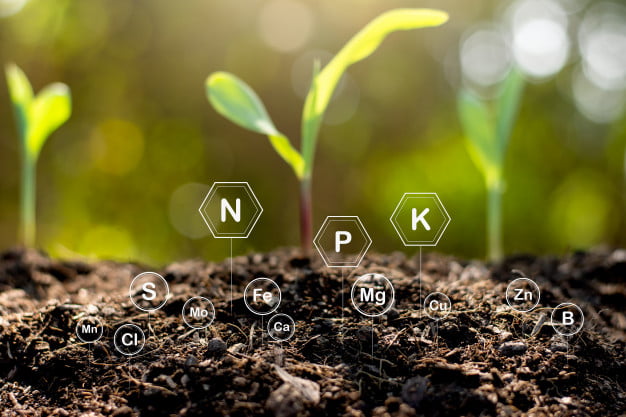Plants need extra nourishment for their overall growth. Some people quote that water is everything they need; this is a myth and should not be practiced. Plants also come under the strata of living organisms and need extra care and nutrients for their well-being. You need to get the best fertilizer that has an ideal ratio of every ingredient.
For choosing an ideal fertilizer, all you need is to examine and analyze your plant’s deficiency and requirement. Different plants have different requirements; according to that, you will have some tips for plant grooming.
There are three types of fertilizing agents that stand responsible for plant life—nitrogen, Phosphorus, and Potassium. Every fertilizer has these ingredients in a specific ratio, like 5-10-10 or 10-10-10, depending on the plant.
Nitrogen fertilizer
This nutrient is very crucial for plant growth. It is used in the late beginning phase and promotes the growth of foliage. This nutrient adds more stem and leaves to your plant leading to full extension.
H2O helps this nutrient to break down in the form of ammonia, i.e., NH3. The plant then absorbs it through the roots.
You can find nitrogen in both organic and inorganic fertilizers. The source of inorganic nitrogen fertilizers:
- Potassium nitrate (KNO3)
- Sodium nitrate (NaNO3)
- Calcium nitrate {Ca(NO3)2}
- Diammonium phosphate
- Urea (CH4N2O)
- Ammonium nitrate
- Ammonium sulfate
The source of organic nitrogen :
- Bat guano
- Chicken coop manure
- Blood meal
- Alfalfa
- Compost tea
- Fish manure
- liquid fertilizer
Do not use nitrogen fertilizer during the flowering and fruiting stage. Always keep the ratio intact otherwise, it can hamper the plant.
Inorganic fertilizers are very easily soluble in the water that gives instant nourishment to the plants. At the same time, organic fertilizers are in compound form, so they need some time to break down.

image source- : www.freepik.com
It is the best fertilizer for plants like legumes, beans, and peas that do not need nitrogen, but they provide nitrogen to the soil.
Leafy vegetables such as lettuce, kales, green mustard, Brussel sprout, and cabbage need nitrogen for growth and development.
Phosphate
Phosphate-rich fertilizers help plants to absorb nutrients from the soil. This ingredient benefits the plant in many ways, such as
- It helps to improve the quality of soil and enhances the absorption process of nutrients.
- It stimulates seeding, blossoming, and fruiting for several plants.
- It helps in strengthening the root system, stems, and stalk of a plant.
- It provides an overall boost to the plant.
A plant needs phosphorus throughout the life cycle from seeds to plant.
It is very hard to notice a phosphorus deficiency in the early stages until it reaches the late growth stages. It is very important to enrich the soil with enough phosphorus because it stimulates growth and expansion.
It is advised to feed the soil with phosphorus for a month because phosphorus needs more time to breakdown. Do not worry about overstuffing because plants absorb the right amount as per their requirement.
For better results, stuff phosphorus enriched fertilizers one finger deep inside the soil. It will
improve the soil quality without any extra effort.
Here are some fertilizers that give great quality and quantity of phosphorus.
- Monoammonium phosphate
- Ordinary superphosphate
- Diammonium phosphate
- Triple superphosphate
- Ammonium pyrophosphate
Plants like beans, peas, and various legumes need phosphorus for growth, and the plant grows from rainy to winter.
Potassium
Potassium is a golden nutrient and is said as the best fertilizer. It makes the plant’s roots grow deeper and enhances its growth. It promotes photosynthesis and converts other nutrients into a soluble state for rapid absorption. It also heals the plant from drought and lack of other nutrients.
Potassium is generally used in all types of plants, including crops and flowering plants. It slows down the spread of diseases and also provides essential nutrients to fight back.
It helps the root system spread, which helps in consuming an adequate amount of nutrients from the soil.
There is no standard ratio for potassium application. It entirely depends on the requirement of plants that vary from plant to plant.
Plants show specific symptoms of potassium deficiency. The foot leaves start yellowing at the edges, and they might fall off if the depletion worsens.
Potassium nitrate is the best fertilizer for plants because it carries both potassium and nitrogen, stimulates the root, and helps damage control.
Here are a few more alternative potassium-rich fertilizers
- Muriate of potash
- Potash sulfate
- Potassium chloride
- Sulfate of potash
Summary
Different plants have different requirements. These three ingredients are the key to plant growth and well being. The fertilizer that is rich in NPK will boost and enable its roots to spread and help damage control.
Always examine the changes you see in a plant that will help you decide which fertilizer is needed for the time being.



